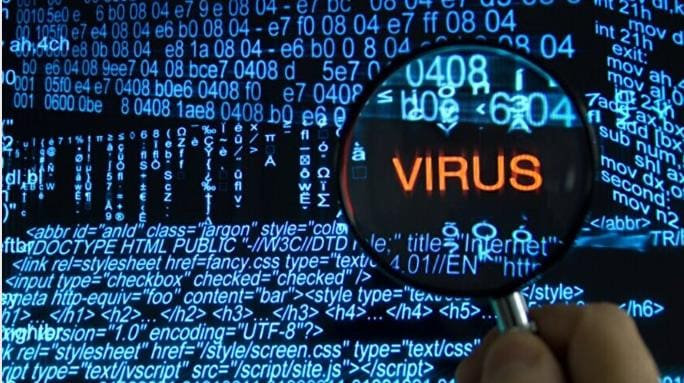Computer viruses are malicious software programs or code sequences created to cause damage, capture data, and sometimes propagate themselves to other computers in a network. While there have been thousands of computer viruses, here are 34 that have been notably detrimental and caused fear due to their significant impact on personal computers, business networks, and even global infrastructure. They are listed in chronological order:
- Elk Cloner (1982): Often considered the first large-scale computer virus outbreak, it affected Apple II systems.
- Brain (1986): This was the first PC virus, created by two Pakistani brothers. It was relatively harmless, but it marked the beginning of the malware era for PCs.
- Jerusalem (1987): Also known as the “Friday the 13th” virus, it deleted programs accessed on that day.
- Morris Worm (1988): One of the first worms distributed via the internet, it slowed down large parts of it.
- Michelangelo (1991): This virus would erase your hard drive on Michelangelo’s birthday (March 6th).
- ILOVEYOU (2000): This virus spread by email and caused billions in damages, affecting millions of PCs worldwide.
- Code Red (2001): This worm exploited a vulnerability in Microsoft IIS servers and even launched a denial-of-service attack on the White House’s web servers.
- Klez (2001): It exploited a vulnerability in Internet Explorer and was able to disable virus-scanning software and replicate itself.
- Slammer (2003): This fast-spreading worm caused considerable disruption on the internet within minutes of its release.
- Blaster (2003): It exploited a Windows vulnerability, causing infected computers to become part of a botnet and launch DDoS attacks.
- Sobig.F (2003): At its peak, it was responsible for a large portion of the world’s email spam.
- Mydoom (2004): This worm spread through email and peer-to-peer networks, causing extensive damage.
- Sasser (2004): This worm exploited a vulnerability in Windows XP and 2000, causing computers to crash and reboot.
- Zotob (2005): This worm attacked Microsoft Windows 2000 operating systems, causing them to repeatedly reboot.
- Conficker (2008): This worm targeted Windows OS and formed a botnet, resulting in millions of infected computers worldwide.
- Stuxnet (2010): A cyberweapon targeting Iran’s nuclear facilities, it marked a new era in cyber warfare.
- Zeus (2007-ongoing): Known for stealing banking information by man-in-the-browser keystroke logging and form grabbing.
- CryptoLocker (2013): This ransomware encrypted files on the victim’s computer and demanded a ransom to unlock them.
- Heartbleed (2014): Not a virus but a vulnerability in the OpenSSL cryptographic software library that led to a major security scare.
- WannaCry (2017): This ransomware exploited a vulnerability in Windows OS, encrypted user data, and demanded ransom in Bitcoin.
- NotPetya (2017): Disguised as ransomware, this was a destructive cyberweapon targeting Ukraine’s infrastructure.
- Bad Rabbit (2017): This ransomware infected networks and encrypted user data, demanding a Bitcoin ransom.
- Emotet (2018): Originally a banking Trojan, it later evolved to become a “swiss army knife” that could serve as a loader for other malware.
- GandCrab (2018-2019): One of the most aggressive ransomware strains ever seen, GandCrab caused enormous damage before its alleged retirement in 2019.
- Sodinokibi/REvil (2019-Present): A sophisticated piece of ransomware often delivered by exploit kits or other malware, which uses an affiliate model.
- Ryuk (2018-Present): A ransomware often used in targeted attacks against major corporations, it is known for demanding exceptionally high ransoms.
- Maze (2019-Present): This ransomware introduced a new twist – stealing the data before encrypting it, and then threatening to release it if the ransom wasn’t paid.
- TrickBot (2018-Present): Originating as a banking Trojan, it has since evolved to perform a variety of malicious behaviors.
- WastedLocker (2020): A targeted ransomware used by Evil Corp, a well-known cybercrime group.
- NetWalker (2020): A ransomware that targeted corporate networks and educational institutions, particularly during the COVID-19 pandemic.
- Conti (2020-Present): A ransomware that uses a large number of simultaneous encryption threads to rapidly cripple business networks.
- Sunburst (2020): This backdoor Trojan was responsible for the highly sophisticated SolarWinds attack that affected numerous government agencies and companies worldwide.
- DarkSide (2021): A ransomware that targeted large corporations and was responsible for the Colonial Pipeline cyberattack, leading to significant fuel shortages in the Eastern United States.
- DearCry (2021): This ransomware exploited vulnerabilities in Microsoft Exchange Server to encrypt user files and demand a ransom.

